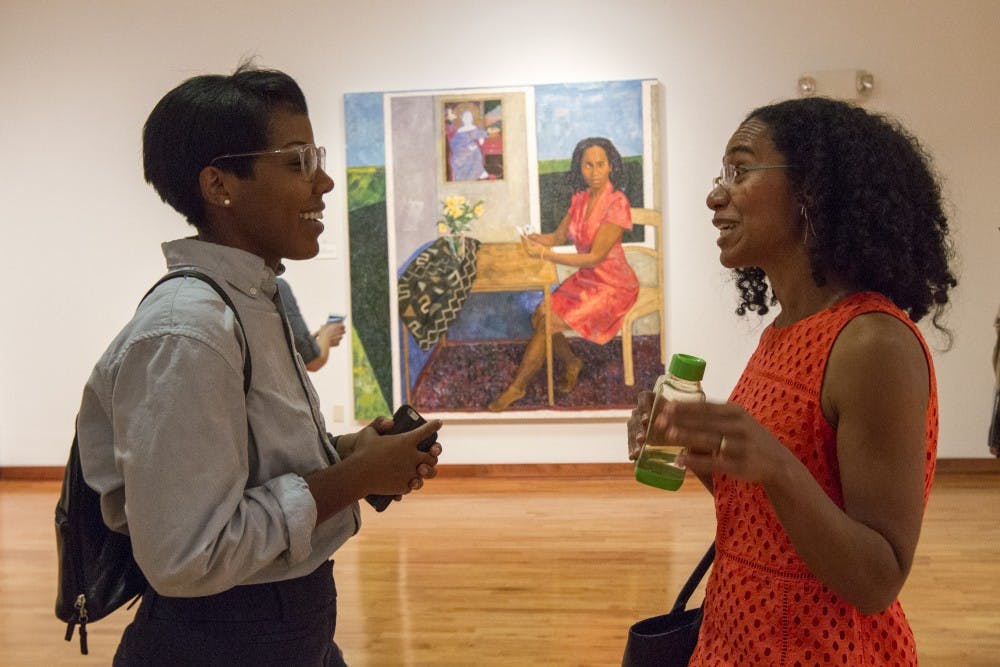The daughter of an African-American mother and South Asian father, Mequitta Ahuja's latest exhibit reflects a discourse on representation of women of color in art — and is currently on display at the Sonja Haynes Stone Center.
Ahuja said her exhibition, "Meaningful Fiction and the Figurative Tradition,"' could be characterized as the unseen made visible through meaningful fiction.
"You can't look through paintings from the past and not confront it. Almost all of the figure paintings of the past are mostly women, and mostly nude white woman," Ahuja said. "I think about the artist's self-portrait as a discourse on representation. In all of my works I am portraying myself as an artist, manipulating the tools of representation. It doesn't matter to me that they're self-portraits — meaning, it doesn't matter to me that they're of me, per se. But it's important to me that the artist is a woman of color. There is a kind of intellectual distance."
She used oil paints on canvas for the pieces in this exhibit, and most of them included a self-portrait. She said her painting style has evolved. In the past 10 years, Ahuja's focus has shifted from issues of self-identity to meditations on the history of painting, and now in her figure pieces Ahuja only paints images of herself.
Senior Cara Pugh, who is minoring in African-American and diaspora studies, said she sees herself in Ahuja's work.
"That's very important to me," she said. "It's not often that I'm able to look on the wall of a university and see someone who looks like me, so this is a very special moment."
Pugh said she appreciates there is always discussion of the diaspora in the Stone Center, pertaining to students of color and white students alike.
The exhibition is one of many programs presented by the Stone Center to enrich UNC's diversity through scholarship, creativity and research.
"It's part of a series of bringing great artists to campus so that we all get an opportunity to see artists who are addressing a wonderful and interesting range of subject matter," said Joseph Jordan, director of the Stone Center.



